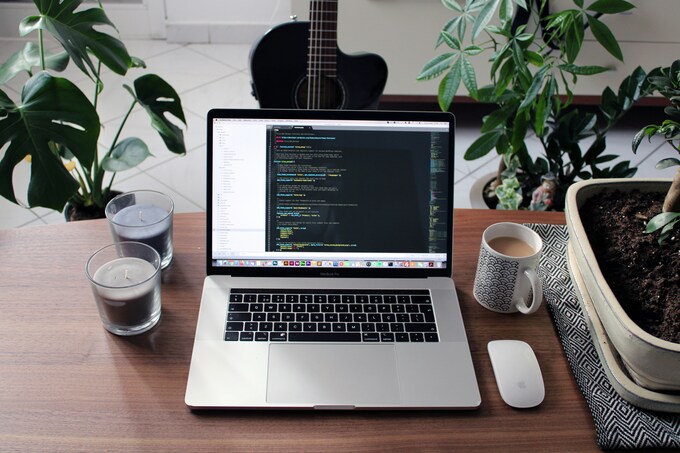Welcome to the world of Laravel, where secure coding meets seamless development! As a developer, safeguarding your web applications against cyber threats is crucial. In this blog post, we will delve into the essential Laravel security checklist to ensure that your projects are fortified with robust defense mechanisms. Let’s dive in and explore how you can elevate your coding practices to fortify your Laravel applications against potential vulnerabilities.
Best Practices for Secure Coding in Laravel
When it comes to secure coding in Laravel, there are several best practices that developers should follow to ensure the safety of their applications. One key practice is validating user input to prevent any malicious data from being entered into the system.
Another important aspect is using Laravel’s built-in authentication and authorization features to control access levels and permissions within the application. This helps in preventing unauthorized users from accessing sensitive information.
Implementing proper error handling mechanisms can help in identifying and addressing potential security vulnerabilities before they can be exploited. It is also crucial to regularly update Laravel dependencies and packages to patch any known security issues.
By following these best practices for secure coding in Laravel, developers can enhance the overall security posture of their applications and protect them from potential threats.
Protecting Against Cross-Site Scripting (XSS) Attacks
One of the most crucial aspects of securing a Laravel application is protecting against Cross-Site Scripting (XSS) attacks. These types of attacks occur when malicious scripts are injected into web pages viewed by other users. To prevent XSS vulnerabilities, developers must sanitize and escape all user input before displaying it on the website. This means validating and filtering any data received from forms or URLs to ensure it does not contain harmful code.
In Laravel, developers can utilize built-in features like Blade templating engine that automatically escapes output, making it safer to render user-generated content on the frontend. Additionally, using Laravel’s CSRF protection helps mitigate risks associated with XSS attacks by generating unique tokens for each request.
By staying vigilant and following best practices in secure coding, developers can effectively safeguard their Laravel applications against XSS vulnerabilities and ensure a safer browsing experience for their users.
Securing Database Connections and Credentials
Securing database connections and credentials is crucial for protecting sensitive information in your Laravel application. One best practice is to avoid hardcoding database credentials directly into your code. Instead, utilize Laravel’s environment configuration file to store and access these details securely.
Consider implementing encryption for sensitive data stored in the database. Laravel provides convenient ways to encrypt data before storing it, adding an extra layer of security against potential breaches.
Another important aspect is restricting user privileges within the database itself. By assigning limited permissions based on the principle of least privilege, you can minimize the risk of unauthorized access or manipulation of data.
Regularly review and update your database connection settings to ensure they align with current security standards and best practices. Stay vigilant against any vulnerabilities that may arise over time by staying informed about new threats and security updates relevant to databases in web applications.
Regular Updates and Patches for Laravel Framework
Regular updates and patches for the Laravel framework are essential to ensure that your web application stays secure and up-to-date. Laravel releases updates frequently, addressing any vulnerabilities or bugs found in previous versions. By staying current with these updates, you can prevent potential security breaches and keep your application running smoothly.
Updating your Laravel framework is a simple process that can be done through Composer, the dependency manager for PHP. Regularly checking for new releases and applying patches promptly will help enhance the overall security of your application. Additionally, keeping abreast of the latest Laravel news and announcements will allow you to stay informed about any critical security updates that may affect your project.
By prioritizing regular updates and patches for your Laravel framework, you demonstrate a commitment to maintaining a strong defense against potential threats. Make it a habit to check for updates regularly and apply them promptly to safeguard your web application from evolving cybersecurity risks.
Implementing HTTPS for Secure Communication
Implementing HTTPS for Secure Communication is crucial in ensuring that data transmitted between the client and server remains encrypted and cannot be intercepted by malicious actors. By obtaining an SSL/TLS certificate and configuring your Laravel application to use HTTPS, you add an extra layer of security to protect sensitive information such as login credentials, payment details, and personal data.
In today’s digital landscape where cyber threats are prevalent, taking proactive measures to secure your Laravel application is paramount. By following the best practices outlined in this security checklist, developers can mitigate risks and safeguard their projects against potential vulnerabilities. Remember, staying informed about emerging threats and regularly updating your framework are essential steps towards maintaining a secure development environment.
Stay vigilant, prioritize security at every stage of the development process, and empower yourself with knowledge to stay one step ahead of cyber threats. Your dedication to implementing robust security measures will not only protect your users’ data but also enhance the overall trustworthiness of your Laravel applications in the eyes of stakeholders. Embrace a security-first mindset and make it a priority in all your development endeavors.
